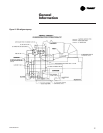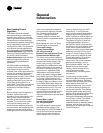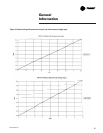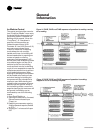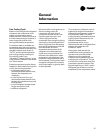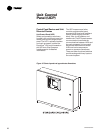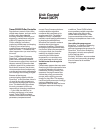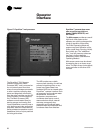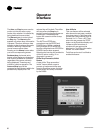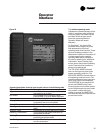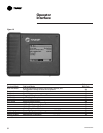
25
CVHE-SVU01E-EN
General
Information
Heat Recovery Cycle
‘‘Heat recovery’’ is designed to
salvage the heat that is normally
rejected to the atmosphere through
the cooling tower, and put it to
beneficial use. For example, a high-
rise office building may require
simultaneous heating and cooling
during the winter months. With the
addition of a heat recovery cycle, heat
removed from the building cooling
load can be transferred to areas of the
building that require heat. (Keep in
mind that the heat recovery cycle is
only possible if a cooling load exists
to act as a heat source.)
To provide a heat recovery cycle, a
heat-recovery condenser is added to
the unit; see Figure 2. Though
physically identical to the standard
cooling condenser, the heat-recovery
condenser is piped into a heat circuit
rather than to the cooling tower.
During the heat recovery cycle, the
unit operates just as it does in the
‘‘cooling only’’ mode except that the
cooling load heat is rejected to the
heating water circuit rather than to
the cooling tower water circuit. When
hot water is required, the heating
water circuit pumps energize. Water
circulated through the heat-recovery
(or auxiliary) condenser tube bundle
by the pumps absorbs cooling-load
from the compressed refrigerant gas
discharge by the compressor. The
heated water is then used to satisfy
heating requirements.
Auxiliary Condensers
Unlike the heat-recovery condenser
(which is designed to satisfy comfort
heating requirements), the auxiliary
condenser serves a preheat function
only, and is used in those
applications where hot water is
needed for use in kitchens,
lavatories, etc. While the operation of
the auxiliary condenser is physically
identical to that of the heat-recovery
condenser, it is comparatively
smaller in size, and its heating
capacity is not controlled.
Trane does not recommend
operating the auxiliary condenser
alone because of its small size.



